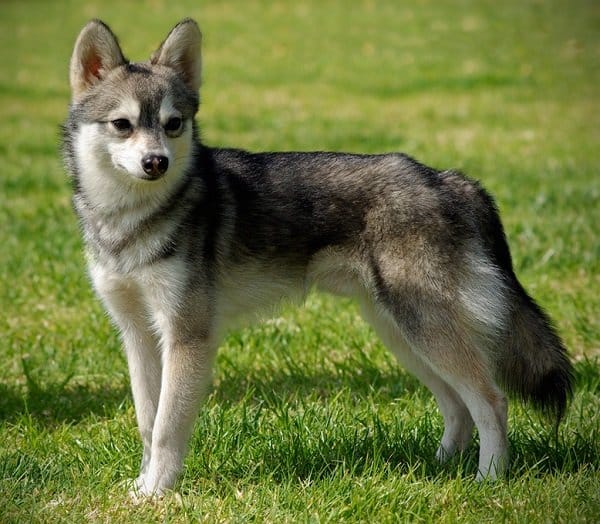The Alaskan Klee Kai is alert, territorial and curious
You may have heard of the Alaskan Klee Kai, but you probably haven’t seen one; they are relatively rare, and were only recognized by the AKC in 1997. With the Alaskan Husky as a forebear, the Alaskan Klee Kai belongs to the Spitz family of dogs. It is significantly smaller than the Husky, however, and many people think it is still a puppy, even when fully-grown.
Alaskan Klee Kai – Temperament
The Alaskan Klee Kai tend to be cautious and wary of strangers, and need to be socialized properly all through their puppyhood. At the same time, they are affectionate and devoted to their family, and will do their best to please their owners.

This is a very intelligent breed, and they learn quickly. Klee Kais can also become bored and destructive if left alone, and need both physical and mental stimulation. They need a good walk every day, and some games at home or in the garden to keep them engaged. After some exercise and some fun, they are happy to play the couch potato on the nearest sofa.
Breed History
As the name implies, this breed was developed in Alaska, starting in the early 1970s. The name means ‘small dog’ in the Inuit Eskimo language. It was the idea of a Linda Spurlin and her family, who wanted to develop a small companion dog.
Linda Spurlin was visiting her husband’s family farm in Oklahoma, and chanced on a small, cute cross breed that looked like a small Alaskan Husky. Linda and her husband asked to take the dog, called Curious, back with them to Alaska. As the owner already had 17 dogs on the farm, he was happy to let this one go!
Linda later found out that her brother-in-law in Fairbanks had a purebred Alaskan Husky that had mated with a smaller, unknown dog breed, producing a litter of attractive puppies that resembled small Huskies. These dogs turned out to be ancestors of Curious. Both Linda and her brother-in-law realized that Curious was very popular with everyone who saw and met her. They decided to try to develop the breed.
After some years, Linda’s brother-in-law decided to stop his attempts at breeding a pure strain, and sold his stock of dogs to her. According to Linda, his advice was to “Breed the best, and cull the rest”. Linda followed this advice, and now with a larger gene pool was able to develop a stable breed standard. It took over 20 years of breeding, only using the best examples of each litter.
If you are thinking about getting an Alaskan Klee Kai, it is very important to find a reputable breeder. Some dishonest breeders will try to sell Alaskan Klee Kai mixed breeds as pure bred. The Alaskan Klee Kai Association of America maintains a list of breeders that you can trust.
Vital Statistics
Height; 13 to 15 inches at the withers
Weight; 10lbs to 15lbs
Life expectancy; 12 to 15 years

Ease of Training
Alaskan Klee Kais are intelligent and very keen to please their owners. They are quick to pick up basic instructions, and are not difficult to train. Commands should be taught in a consistent and patient manner.
The Alaskan Klee Kai also does well in obedience and agility trials, and have also been used as therapy dogs in care homes.
Protection
This is an alert and curious breed which is apprehensive of strangers. The Klee Kai will certainly bark to let you know that something is going on in the vicinity, so they make good watch dogs.
When it comes to action, however, they are simply too small to deter a would-be intruder, nor to take action, despite their strong desire to protect their family. If you need a guard dog for protection, look for a bigger dog.
Grooming
The Alaskan Klee Kai has a double-layer coat; a fine undercoat and a coarser outer coat. They will usually shed the undercoat twice a year, and this generates a lot of hair! They need daily brushing to remove the dead hairs, especially during shedding.
Like all dogs, they also need their teeth brushing, ears inspecting for cleanliness, and claws clipping if they become too long, normally at the vet.

Health Considerations
Alaskan Klee Kais are considered to be generally mostly free of genetic problems, but there are certain issues that may crop up;
- Undescended testicles
- Retained deciduous (baby) teeth
- Luxating patella
- Blood dyscrasias such as Factor VII deficiency
- Thyroid disease.
Of course, a normal schedule of inoculations should be followed with your vet, including against Parvovirus.
Famous Alaskan Klee Kais
I couldn’t find any! Please let me know if you are aware of one, through the Contact Me link. Thank you!



